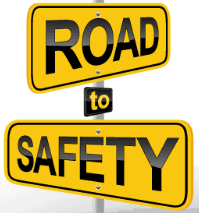 Avoid Accidents During Those Long Haul Trips with These Top Tips
Avoid Accidents During Those Long Haul Trips with These Top Tips
Safety has always been a top priority for long haul drivers. Accidents are expensive, across the board. If the accident is serious enough, there is the possibility of human injuries or even fatalities. And every accident brings unproductive delays and downtime, paperwork and the high price of repairs.
Truck manufacturers are adding a wide variety of technology features to help you drive more safely and avoid accidents, but there are still things only a driver can control. Here are seven tips to help you reduce your risk of accidents and the associated costs — each of them focusing on one of the leading causes of truck-related accidents.
1. Weather
Here in the northeast, winter weather can get downright nasty, and it can change in a heartbeat. Keep an eye on the sky as well as the road, to note approaching weather changes that could bring a drop in temperature, wind, snow or rain.
Slow down, and leave extra distance behind the vehicle in front of you. Activate your turn signals sooner – 5 extra blinks will give other drivers a better opportunity to see your signal and react if necessary. And if you see other truckers pulling off the road, seriously consider following suit.
2. Unfamiliar roads
You don’t want to get lost, but trying to read a map or road signs or check your GPS screen are serious distractions from driving because they take your eyes and your mind off the road. Slow down a little so you can concentrate better.
3. Speeding
Not surprisingly, this is the second-highest accident cause. Your vehicle is much more dangerous than a passenger car, because it’s so much bigger and heavier. You need more room to slow or stop – something motorists often forget — so you have to take full responsibility for giving yourself plenty of room.
Besides, speeding is simply a bad plan. You have a schedule to meet, but accidents can ruin more than your schedule. Speeding causes unnecessary wear and tear on your truck, and it could cost you your job
4. Blind spots
Motorists also forget that truck drivers have blind spots, so once again you have to take that into consideration for them
5. Truck maintenance
 Your pre-trip inspection isn’t just a formality, it could literally save your life – or someone else’s. And it will certainly save you potential aggravation and expense that come with unplanned breakdowns and repairs. If your truck is sidelined, you or your employer aren’t making any money, and you’re failing to meet a customer’s delivery schedule.
Your pre-trip inspection isn’t just a formality, it could literally save your life – or someone else’s. And it will certainly save you potential aggravation and expense that come with unplanned breakdowns and repairs. If your truck is sidelined, you or your employer aren’t making any money, and you’re failing to meet a customer’s delivery schedule.
Keep that in mind as you perform your inspection, and check every detail. The leading violation for out-of-service inspection is brake-related problems, so be especially careful to check your brakes as well as your tires, fluid levels and even your mirrors and other safe-driving tools.
6. Driver fatigue
Fatigue impairs you, just like drugs or alcohol. When you’re tired, you respond sluggishly, and if you fall asleep you can cause a very serious accident. Whether or not you still have time “available” in your day, stop and rest as soon as you start to feel less-than-alert.
7. Driver health
You’ll be more alert and comfortable if you get plenty of rest and eat right on the road. Exercising for a few minutes every time you stop will keep you refreshed, too.
Heavy-duty truck traffic is expected to continue increasing over the next few years, as the trucking industry takes on an even larger share of the movement of goods around the country. And with the current dip in gas prices, AAA and others are predicting an increase in passenger cars on the road as well. More vehicles means more crowded roadways, and that means greater risk of accidents.
There has never been a better time for long-haul drivers to review your personal on-the-road habits to make doubly sure you’re driving safely and taking good-sense care of yourself.
